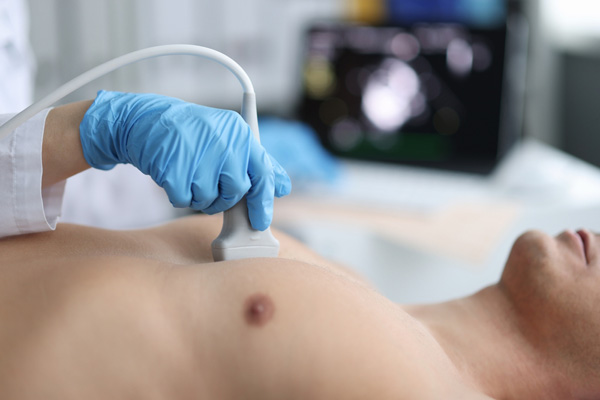Everything You Need To Know About Echocardiograms

A cardiologist will order an echocardiograms to check a patient's heart for heart disease and other conditions. The test uses sound waves instead of radiation to get pictures of the heart's structures and function. Here is a quick overview of this important diagnostic test, why you may need it, and what to expect.
Overview of an echocardiogram
Also known as a heart ultrasound or sonogram, this test uses high-frequency sound waves (ultrasound) to generate images of the heart. A technician or sonographer places a device called a transducer on the chest. This transducer emits sound waves that bounce off the heart's structures, creating echos converted into real-time moving images on a screen. Though a technician or sonographer performs the test, a cardiologist will interpret the results.
Why it is needed
This test aims to give the cardiologist a detailed look at a heart's structure, function, and blood flow. The doctor will use these images to assess cardiac health and check for specific heart defects or issues. A provider may order this test if heart issues are suspected or a patient manifests symptoms consistent with heart health issues, such as shortness of breath, chest pain, irregular heartbeat, or unexplained fatigue.
Types of echocardiograph
Here are the two main types of echocardiogram:
Transthoracic echocardiogram (TTE)
The TTE is the most common type of echocardiogram, and the one most people are likely to have. The transducer is placed on the chest to create images from outside the body. These images show the four chambers of the heart, the four valves, and the surrounding blood vessels. The procedure is usually noninvasive, but a patient may be given a contrast dye via IV to help the heart's structures show up better.
Transesophageal echocardiogram (TEE)
Sometimes, the standard echocardiogram does not provide enough detail, and a cardiologist may order this version of the test. A TEE gives a more detailed look at the heart and the aorta, the body's main artery. Unlike the standard version of the test, the TEE creates the images from inside the body by placing a thin, flexible tube down the esophagus. A cardiologist may order this test to get a better view of specific areas that are hard to view with just a standard TTE. This test is particularly useful in looking for blood clots and assessing heart valve issues.
Other versions of the echocardiogram include the stress echocardiogram and the fetal echocardiogram. The first occurs right before or after the patient exercises, usually to check for coronary artery disease. The second one is done during pregnancy to check the heartbeat of a developing fetus.
What to expect
Preparation for this test depends on the patient and type. Patients typically do not need to do any prep for the standard TTE. However, preparation for the TEE is more involved, and patients may need to adjust their medications and avoid eating or drinking for about 6 hours before the test. The standard TTE typically runs anywhere from 30-60 minutes, but the TEE can take a full hour to 90 minutes due to the more in-depth nature of the test and the need for sedation. Also, patients should arrange for someone else to drive them home after a TEE.
More on echocardiograms
This test is an important part of monitoring heart health. Florida Premier Cardiology will thoroughly prepare you for the process and answer any questions. To learn more about the echocardiogram, call our team today.
Request an appointment here: https://floridapremiercardio.com or call Florida Premier Cardiology at (561) 325-6495 for an appointment in our Delray Beach office.
Check out what others are saying about our services on Yelp: Echocardiograms in Delray Beach, FL.
Recent Posts
Varicose veins can cause discomfort, swelling, and visible changes that affect confidence and circulation. varicose vein treatment helps relieve these symptoms while improving overall vascular health. Advances in medical technology now allow cardiologists to offer effective, minimally invasive procedures that restore proper blood flow with little downtime. Understanding what to expect from varicose vein treatment…
Peripheral arterial disease can cause uncomfortable symptoms in the legs and, sometimes, the arms. Fortunately, a cardiologist can detect this condition early and provide personalized care to minimize the day-to-day impact. While being diagnosed with peripheral arterial disease may sound concerning, understanding exactly what it means and how to manage its symptoms can lead to…
Cardiac catheterization supports precise diagnosis when symptoms suggest coronary artery disease, valve problems, or heart failure. This minimally invasive procedure offers real-time measurements, imaging, and targeted testing to shape individualized care. It enables cardiology teams to map blood flow, confirm a diagnosis, and plan interventions in a single session.A cardiologist threads a slender catheter through…
Visiting your heart doctor for regular checkups can help keep the most important organ in your body in top shape. Research shows that the heart is the engine that keeps the body going. It pumps oxygenated blood to every part of your body. That is why having a cardiologist in your life is necessary, especially…


